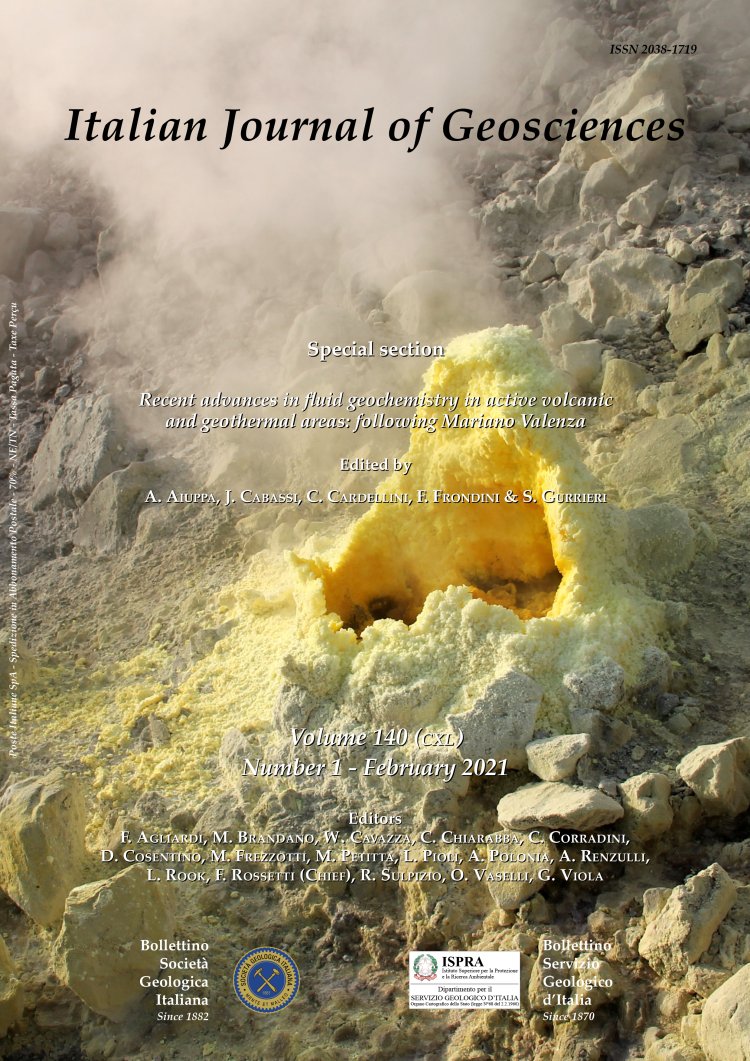
Continuous monitoring of hydrogen and carbon dioxide at Stromboli volcano (Aeolian Islands, Italy)
Roberto M.R. Di Martino (1), Marco Camarda (1) & Sergio Gurrieri (1)
(1) Istituto Nazionale di Geofisica e Vulcanologia, Sezione di Palermo - V. Ugo La Malfa, 153 – 90146 Palermo, Italy.
Corresponding author e-mail: roberto.dimartino@ingv.it
Volume: 140 (2021) f.1
Pages: 79-94
Abstract
The geochemistry of volcanic gases has been fruitfully applied to identify important changes in the volcanic activity. This study reviews the dataset of the volcanic gas survey performed during 2009 and 2010 at Stromboli (Aeolian Islands – Italy). Dry gas collection occurred discontinuously at the crater fumaroles for subsequent chemical and isotopic (δ13C-CO2) analyses in the laboratory.
A tailor-made device enabled continuous survey of H2 molar fraction and CO2 flux on the same site. Evaluation of the raw data was performed in accordance with air temperature, atmospheric pressure, wind speed and wind direction dataset. Both MLR (Multiple Linear Regression) and FFT (Fast Fourier Transform) analyses allowed filtering the dataset from the environmental effects. The MLR analysis indicated that wind speed and air temperature affected the CO2 flux. Changes in the atmospheric pressure promoted pumping effect of the fumarole gas and caused changes in the H2 molar fraction. The power spectral analysis revealed daily cycles in both gases. A digital signal filtering procedure enabled minimizing the environmental effects.
This study confirmed that gas emissions from the crater fumaroles have both chemical ad isotopic composition similar to the magmatic gas phase. The results of the continuous survey showed that changes of both H2 and CO2 correlated with changes of the volcanic activity. Therefore, H2 and CO2 resulted effective tracers of the dynamics involving the plumbing system of Stromboli. Identification of changes in the gas emissions at open conduit volcanoes offers a great advance over the ground gas survey. The results of the continuous survey at Stromboli showed that H2 could apply as an auxiliary parameter of the CO2 flux in the surveillance programs of active volcanoes.
Keywords
Get Full Text